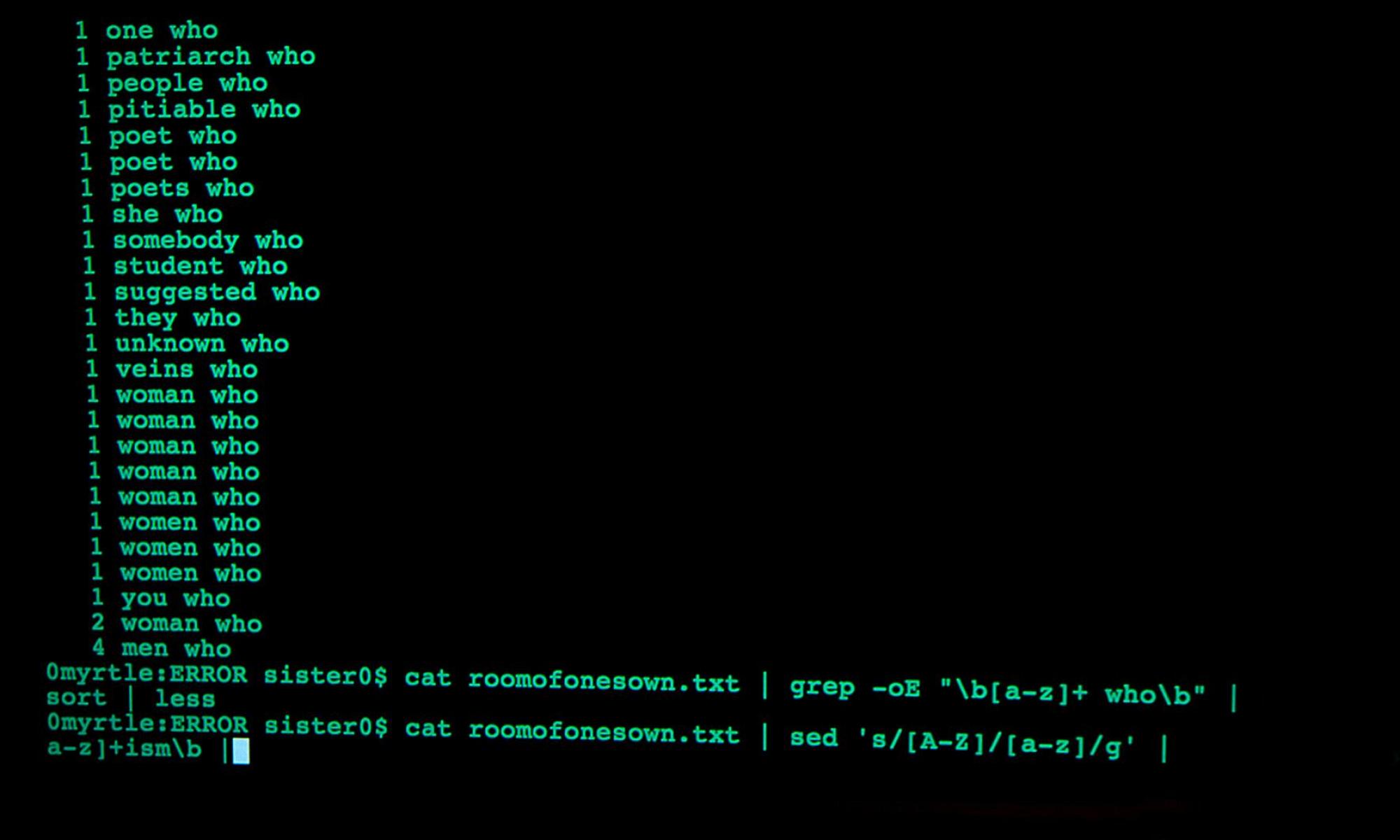Vessels of Infinite Veracity: Command-line Incantations
Code is an intermediary between conceptual models and manifold realities.
Pulsating on the command-line in the shell of the computer, I find a marvellous mess of constellations, nebulae, interstellar gaps and awesome gullies that provoke vertigo, as if hanging from earth upside down on the brink of infinite space. An exemplar of the abyss-like nature of the shell is #/dev/null—a special *nix file directory where you pipe your unwanted data flow through this output. [1] When I first viewed data disappearing into this file I had an epiphany about the astrophysical black hole and the physics of its event horizon.
[1] ‘*nix’ denotes Unix or, more precisely, Unix-like operating systems such as Linux or BSD. The terminal on the OSX is based on Open BSD. Although both of these operating systems are different from Linux, which is a kernel wrapped in one of the many distributions, there are numerous similarities between Unix and Linux systems. ‘Unix’ is a trademark, and as such cannot be used outside its commercial proprietorship. However, as the operating systems I am discussing owe their historical roots to AT&T’s ‘Unix’, I refer to them generically as ‘*nix’.
Image:
Nancy Mauro-Flude
Command Line , 2016
Performance still, Transmediale, Berlin
Courtesy of Nancy Mauro-Flude

